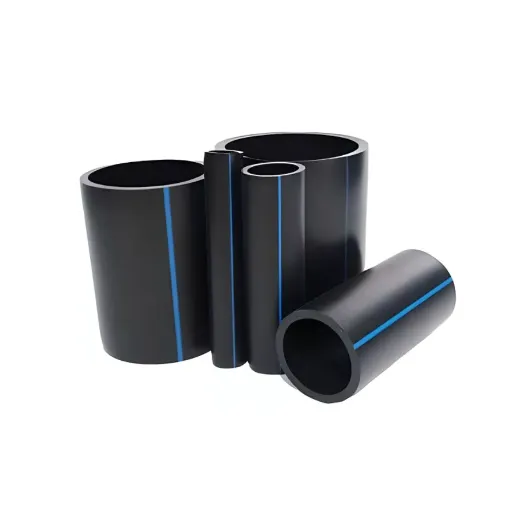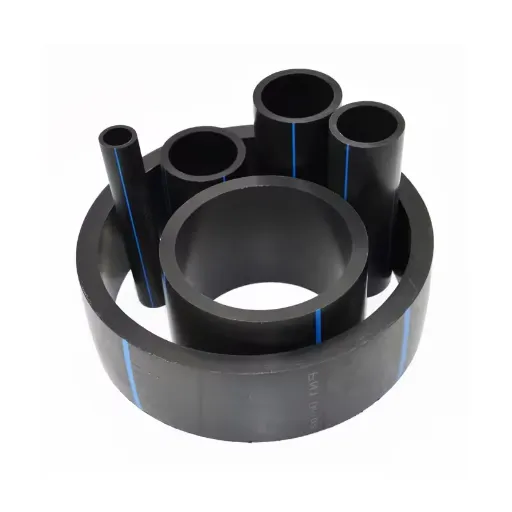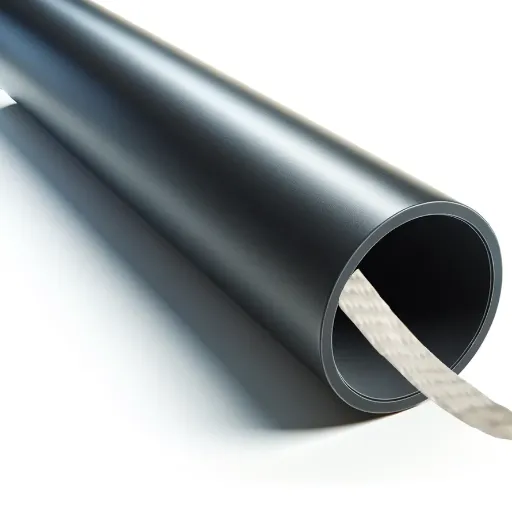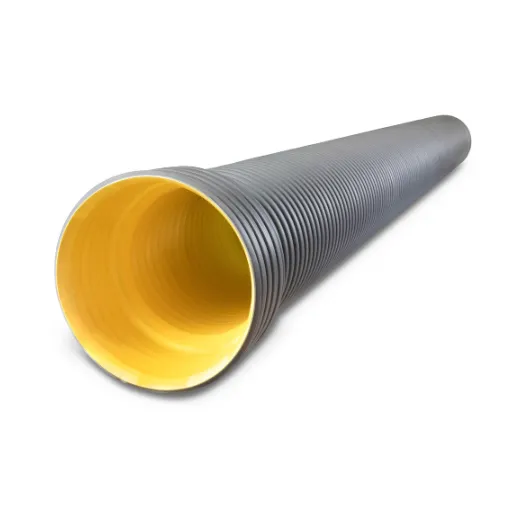Within the various industrial sectors, HDPE piping is considered a revolutionary product capable of providing a very versatile and efficient response to a multitude of applications. Since they are considered durable with high flexibility and resistance to corrosion, the pipes are rapidly displacing conventional materials from infrastructure, agriculture, and industrial operations. But just what does make HDPE pipes excellent, and, more importantly, in what areas do the pipes possess their greatest value? This article will delve into the prime benefits offered by HDPE pipes and will investigate the various uses of HDPE pipes in various sectors. Whether one is working in the industry or is outside and is interested in innovative materials shaping the world, this guide will give enough insight for one to understand the value of HDPE pipes.
Introduction to HDPE Pipe
What is HDPE?
High-Density Polyethylene (HDPE) is a thermoplastic with multipurpose applications manufactured from petroleum. Due to its low density-high strength characteristics being inacted by the HDPE has the other mechanism of being lightweight and incredibly strong, thus serving many applications. The resistance provided by the material to impact, chemicals, and adverse weather makes it an asset in high-level tasks where resistance is of the essence.
Another notable trait of HDPE is that it remains very flexible and highly resistant to cracking at all temperatures under stress. This, however, proves useful in piping systems subjected to corrosion and wear by environmental conditions. HDPE pipes can and do withstand very high stresses over a long period of time, requiring little to no maintenance or structural repair.
It is equally good environmentally. HDPE pipes can be recycled and re-formed into new products after the first use. Destructively, however, the terribly long life of these pipes and their reusability somewhat lessens their environmental impact. As a result of these facts, today, HDPE has become more and more chosen for use in several sectors including construction, agriculture, industrial piping, and even consumer goods.
Overview of Polyethylene Pipe Types
Polyethylene pipes come in various types according to different needs and applications. One of the primary classifications includes High-Density Polyethylene (HDPE), Medium-Density Polyethylene (MDPE), and Low-Density Polyethylene (LDPE). The three types mainly differ in density, strength, flexibility, and intended usage.
- High-Density Polyethylene (HDPE): HDPE pipes are considered among the strongest due to the durability of the material. HDPE resists chemical degradation or corrosion under environmental stresses and thus finds applications in industrial piping, water distribution, and underground installations. HDPE pipes find application wherever long-term materials resistant to pressure are required.
- Medium-Density Polyethylene (MDPE): MDPE pipes provide a balance of strength and flexibility. They are used mainly for gas distribution networks because of their resistance to cracking and impacts. Their flexibility permits easier installation, particularly for applications on uneven terrain or in areas where the soil might shift.
- Low-Density Polyethylene (LDPE): Being the most lightweight and flexible among the polyethylene pipes, it finds its applications mostly under low-pressure agricultural and irrigation systems. LDPE is preferred for transporting water in drip irrigation systems where the flexibility of the material comes to great use.
What benefits they bring into the equation depends on the type of poly piping, thus providing a versatile approach to the requirement in various fields. Knowing their differences can thus help make the right choice most suited for your project needs.
Importance of Pipe Systems in Modern Infrastructure
Pipe systems form the basic infrastructure, playing a crucial role in supporting essential services. These systems enable the transportation of water, sewage, gas, and other materials through pipes, thus creating supply lines to both urban and rural areas to define lifelines of resources. Without water and sewage pipe systems, day-to-day life and industrial processes would be significantly disrupted, placing importance on their value as essential services.
Water management is counted among their prime areas of functioning. These piping systems make sure clean water reaches homes, offices, and industries across different sectors while wastewater is carried away for treatment, thus fostering public health, cutting down on environmental pollution, and helping with irrigation. Another function is to supply gases needed for energy production, heating, and manufacturing processes, bridging so many sectors.
New technologies in pipe materials and design are expected to allow pipes to remain durable, efficient, and sustainable while the demand for this infrastructure continues to grow with the population. As a matter of fact, smart pipe systems will have sensors to monitor conditions and detect leakage, thereby enhancing their maintenance and reducing waste. Therefore, investing in strong, adaptable pipe infrastructure will allow societies to deal with issues that come with urbanization and climate resilience and secure constant access to vital resources for all.
Advantages of HDPE Pipes
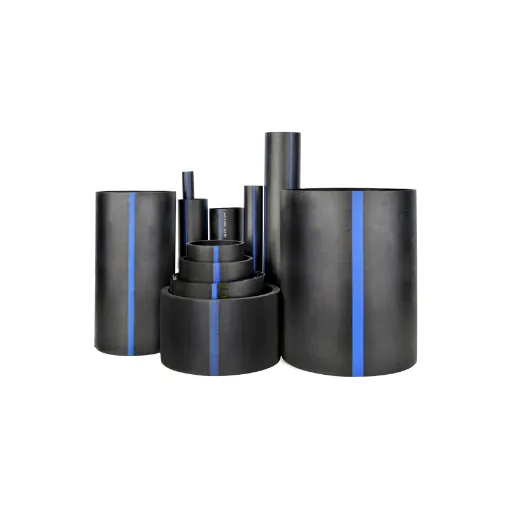
Durability and Longevity
HDPE (High Density Polyethylene) pipes are highly durable and long-lasting, and so they are barely ever disappointed. Here are five statements showing the durability and longevity of HDPE pipes:
- 1
Corrosion Resistance: HDPE pipes are resistant to corrosion from various chemicals, moisture, or even soil, unlike traditional materials such as steel and iron. Therefore, the pipes face minimal degradation over time and can survive in challenging environments. - 2
Flexibility and Strength: This flexibility allows HDPE pipes to absorb pressures and external loads that could otherwise have led to cracking or deformation. It also contradicts ground motion, which makes it useful in places with seismic activities. - 3
Life Span: HDPE pipes have a service life of 50 to 100 years under normal conditions and provide an economic, life-long solution that does away with frequent replacements or repairs. - 4
Resistance to Abrasion: These pipes come of use when transporting abrasive materials with minimum wear; thus, they are considered industrial-use pipes, such as the transport of slurry in the mining sector. - 5
Leakless Joints: The heat-fusion joining method gives HDPE pipes strong joints that are leak-proof, thus providing the integrity of the pipeline and reducing water loss with time.
These features make HDPE pipes a suitable choice for sustainable and durable piping systems.
Resistance to Corrosion and Chemicals
One corrosion-and-chemical-resistance property of HDPE pipes is that they are best suited for use in any application wherein other materials might deteriorate with time. Being inert, the pipes remain unaffected by chemicals like acids and bases, thus maintaining the same construction excellence with durability and reliability even in challenging environments. The five key aspects of their resistance to corrosion and attack by chemicals:
- 1
Chemical Resistance: HDPE pipes resist a vast array of chemicals, such as strong acids, alkalis, and salts, allowing them to be used in industrial applications in chemical transportation. - 2
Non-Corrosive Nature: Unlike metals that get corroded by rust, scale, and/or pitting, HDPE pipes do not go through such corrosion, thereby giving a longer life span in underground or underwater applications. - 3
Resisting Organic Agents: They are resistant to chemical attacks by organic agents, such as fuels, oils, and many hydrocarbons, thus making them safe to be used in petrochemical industries. - 4
Against Environmental Stresses: The pipes remain intact when placed for a long time in aggressive environments such as seawater or contaminated soils. - 5
Resistant to Microbes Corrosion:The pipes resist microbial bio-corrosion and thus provide consistent performance in sewer systems and wastewater management.
The strong chemical and corrosion resistance characteristics of HDPE pipes further strengthen their well-trusted and sustainable solution for various industries.
Cost-Effectiveness and Installation Benefits
HDPE pipes provide the highest value because they are economically priced and easy to install. Outline five greater benefits that justify the preference of HDPE pipes in all applications:
- 1
Lightweight Material: Because HDPE pipes are lighter than steel or concrete, they incur fewer transportation charges and are easier to handle on-site. - 2
Reduced Installation Time: HDPE pipes can be installed in a fraction of the time compared to conventional pipes, which, considering labor costs, helps in shortening the project schedule due to the flexibility of these pipes and their compatibility with most modern fusion technologies. - 3
Lower Maintenance Costs: HDPE pipes being highly durable and resistant to corrosion greatly lessen the frequency of repairs or replacements needed, translating to long-term maintenance savings. - 4
Fewer Joint Requirements: Longer length options and inherent flexibility enable HDPE pipes to be laid with fewer joints, and this means reduced material costs and also lesser chances of leakages or failures at the connection points. - 5
Extended Service Life: Based on standard operating conditions, HDPE pipes have a life expectancy of over 50 years. Compared with other piping materials, their extended life also means a good ROI.
The advantages mentioned above make HDPE pipes an economically feasible and practical alternative for infrastructure projects with assured long life and reliability.
Common Applications of HDPE Pipes
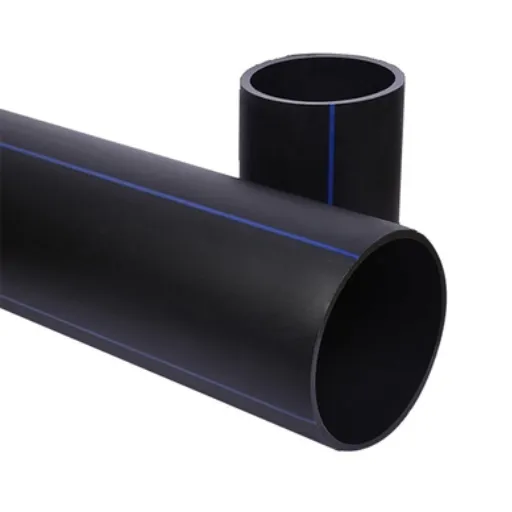
Water Supply Systems
The HDPE pipe is heavily utilized in water supply systems due to its durability, flexibility, and corrosion resistance. They are perfect for fetching potable water safely and efficiently over long distances with these properties. Following are five important functions of HDPE pipes in water supply systems:
- Municipal Drinking Water Distribution: HDPE pipes find a wide range of use in urban and rural settings for supplying clean drinking water. Their joints being leak-proof and chemical-resistant ensure that the water remains safe and pure.
- Irrigation Systems: HDPE pipes assist agricultural irrigation by bringing water efficiently on crops. Their flexibility provides easy installation on undulating terrain.
- Rural Water Supply Projects: These pipes are best exploited in rural areas where rugged physical conditions demand a secure delivery of potable water.
- Industrial Water Transportation: From manufacturing to cooling and services, industrial systems use HDPE pipes to transport large quantities of water.
- Stormwater and Drainage Solutions: Designed to handle heavy water flows, HDPE pipes are used for stormwater management in urban infrastructure to prevent flooding and waterlogging.
Highlighting the versatility of HDPE pipes, these applications demonstrate why they are the best fit across various aspects of water supply systems.
Drainage and Sewage Systems
Depending on quality, price, and supply, there are few materials more suitable for drainage and sewage systems than HDPE pipes. Their flexibility renders them reliable for the systems to follow any existing conditions while providing long-term serviceability. Listed below are five applications of HDPE pipes in drainage and sewage systems:
- Urban Sewage Networks: HDPE pipes are often utilized in cities for conveying wastewater to sewage networks in a manner that is safe and efficient. Leak-proof joints prevent environmental contamination.
- Surface Drainage: HDPE pipes exist to carry massive stormwater flow during special urban occasions aggravated by flooding during heavy rain. It, in turn, maintains the priority for discharge of any excess runoff.
- Industrial Waste Disposal: Industries use HDPE pipes for the conveyance of wastewaters containing chemicals and contaminants. The pipes resist a wide spectrum of chemicals, thus ensuring the integrity of the system.
- Agricultural Drainage: HDPE pipes are very useful in farmlands for subsurface drainage, keeping more water away from the surface and improving soil condition for crop growing.
- Sewage Treatment Plants: These pipes are used in great quantities in sewage treatment plants for conveying and handling treated and untreated wastewater with a high degree of efficiency and reliability.
So, this gives us a glimpse of the mindset supporting HDPE pipes in these applications as strong, sustainable solutions for drainage and sewage systems in modern infrastructure.
Industrial Applications and Uses
HDPE pipes are used extensively in many industries due to their durability, corrosion resistance, and adaptation to various environments. Below are five industrial application industries with details:
- 🔬 Chemical Transport: HDPE pipes are indispensable in industrial chemical processing and corrosive substances because they are inert towards most chemicals. They remain undegraded by chemicals, ensuring long-term reliability in chemical processing plants.
- ⛽ Oil and Gas Industry: Typically, these pipes are utilized in transporting crude oil, natural gas, and various other fuel products in the oil and gas industry. Their very sturdy structure can sustain very high pressures and resist damages from harsh external environments.
- ⛏️ Mining Operations: HDPE pipes are important aspects of mining as they are used to convey slurry, tailings, and wastewater. With these pipes providing resistance against abrasion and extremely flexible in nature, they can very well be taken for heavy-duty applications in onerous conditions.
- 🏭 Water Distribution in Factories: HDPE pipes are harnessed in factories for water distribution systems to efficiently deliver on work, making sure operations remain smooth and sustainable. The leak-proof joints withstand high pressure and amy so forth, making it worthy watermark for industrial water supply networks.
- ❄️ Cooling: HDPE pipes are provided in industrial cooling for distribution of chilled water and other cooling agents. Their thermal insulation properties facilitate maintenance of the required temperature level and thereby enhance energy efficiency.
Using these applications, industries still enjoy the affordability and reliability of HDPE pipes in their major operations.
HDPE Pipe Installation Techniques
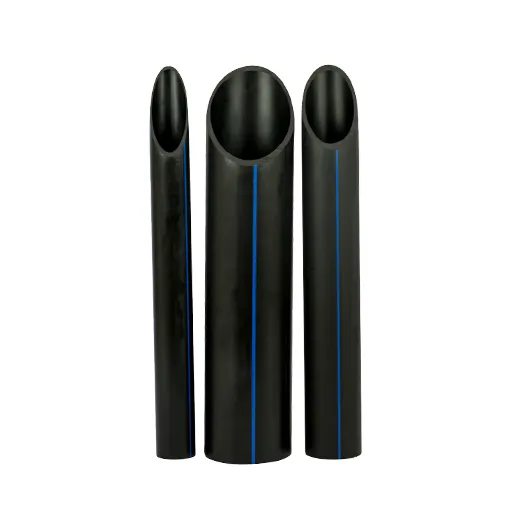
Methods of Installing HDPE Pipes
In my projects, a careful choice is always made, trying to select an appropriate and efficient method for the HDPE pipe installation based on the requirements. The first method is butt fusion welding, where heat is applied to the ends of the pipe, which are then pushed together to form a seamless joint that is durable. This method produces extremely strong, leak-proof joints, suitable for systems operating under high pressure and for long-term use in the industries.
My other choice would be electrofusion welding, where a coupling having electric elements is used to heat and meltor fuse pipes. This method is very useful where space is limited or where high precision is necessary; it provides a guaranteed and consistent joint, even in areas that might undergo stress or movement.
For speedy installations, mechanical joints come into play, where adapters or couplings are used to install the pipes themselves. This procedure is very simple, requires little to no special equipment, and makes disassembly and maintenance easy. By combining these methods, we can be assured that the HDPE pipes are installed securely, efficiently, and according to the projects’ particular needs.
Fittings and Accessories for HDPE Systems
The HDPE pipeline systems are well versatile and work with a variety of fittings and accessories depending on the application for maximum efficiency. Some of the common fittings include elbows, tees, reducers, and end caps, allowing for a perfect fit and layout in almost any piping configuration. All these are usually designed to have the same degree of durability and chemical resistance as the HDPE pipe to insure system integrity under varying operational conditions.
Accessories such as compression joints, flanges, and stub ends are also required to allow secure connections and transitions between HDPE pipes and other materials such as steel or PVC. Advanced electrofusion fittings embed electrical coils that allow accurate welding to be carried out, making these fittings exceptionally useful in harsh environments such as in gas distribution networks or high-pressure water systems.
Choosing the appropriate fittings and accessories should bear in mind the special conditions relevant to the lay-down, such as operating pressures and temperature ranges and environmental conditions. Through the integration of latest developments in materials and design, modern fittings and accessories enable HDPE systems to perform much better while guaranteeing the entire lifespan of the solution from municipal infrastructure projects all the way down to industrial applications.
Best Practices for Successful Installations
An HDPE piping system is installed successfully through careful planning and adherence to given standards. First, site conditions should be reviewed, with considerations given to soil stability, environmental factors, and load requirements. Improper trenching, bedding, and backfilling would compromise the pipe and deform it from external pressure.
Butt fusion and electrofusion joins require trained workers using certified equipment for achieving a leak-proof and durable joint. Cleaning and alignment of pipe ends are of extreme importance in the fusion operation; the better the alignment, the better the weld. Proper pipe alignment and anchoring are also required to avoid stress concentration during service.
Inspection and pressure testing must be conducted at least once during the installation process as part of quality assurance. These tests would confirm the integrity of the system and its compliance with regulatory standards, thus reducing any risk of leaks or failure in future. A combination of careful preparation with state-of-the-art techniques and technologies would enable a contractor to provide HDPE installations that fulfill all requirements for performance in the long run, durability, and reliability.
Advantages and Disadvantages of HDPE
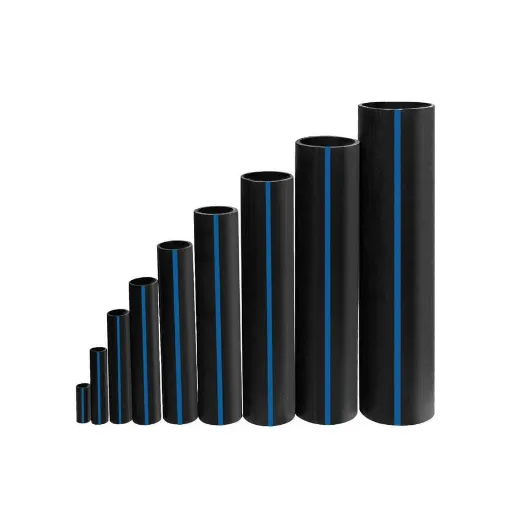
Comparative Analysis with Other Pipe Materials
The comparison involves HDPE pipes and materials such as copper, ductile iron, concrete, clay, PVC, and steel on factors such as durability, flexibility, price, and effect on the environment.
| Material | Durability | Flexibility | Cost | Eco Impact | Leak Resist. | Corrosion Resist. |
|---|---|---|---|---|---|---|
| HDPE | High | High | Low | Low | High | High |
| PVC | Medium | Medium | Medium | Medium | Medium | Medium |
| Steel | Low | Low | High | High | Low | Low |
| Concrete | Medium | Low | High | High | Low | Low |
| Copper | Low | Low | High | High | Low | Low |
| Clay | Low | Low | Medium | High | Low | Low |
Limitations and Considerations
When materials are considered, each material must be evaluated with respect to the characteristics required by the specific project. Environmental conditions, budgetary constraints, or expected, life must be considered. In other words, while HDPE is great in design flexibility and applications at a low cost, lack of resistance to heat makes it unsuitable for uses requiring higher operating temperatures. Conversely, steel is very strong structurally but is subjected to corrosion; such corrosion protection costs will raise the overall project costs.
Another issue that would have to be taken into consideration is the impact on the environment. For example, concrete and steel impact the environment more, as the production processes are energy-intensive and involve major carbon emissions. In comparison, materials such as HDPE and PVC have a relatively low environmental impact but may be toxic to the extent that their long-term recycling or environmental decomposition poses problems. Thus, balancing between practicability and sustainability goes a long way in the execution of projects that seek adherence to well-targeted modern environmental standards and regulations.
Finally, maintenance and longevity need not be overlooked. Materials like copper and clay, though traditional, are limited in application and durability, thus having higher maintenance costs and becoming more susceptible to failure with time. Leak and corrosion resistance impact material choice significantly, especially in applications involving water or chemical conveyance. Ultimately, a holistic analysis intersects material properties, life cycle, and environmental factors that ensure the chosen material satisfies both the immediate project-related goals and the focused long-term operational efficiency.
Future Trends in HDPE Technology
The HDPE (High-Density Polyethylene) production is ever-evolving, driven by materials science advances and the industry demand for sustainable solutions. Key trends include the incorporation of recycled HDPE in manufacturing processes to promote the circular economy and reduce plastic waste. Other polymer modifications being researched aim to improve HDPE’s physical properties-tensile strength, flexibility, and temperature resistance so it can be applied to a broader range of applications.
In addition, smart manufacturing technologies such as automation and IoT are streamlining HDPE pipe production to improve accuracy and reduce material waste. On the other hand, extrusion members are innovating toward increased extrusin echnology, and nanotechnology is bringing hope toward the creation of composite HDPE with better resistance and durability superior to chemical and UV degradation.
Being environmentally conscious is shaping the course of HDPE development. Carbon-neutral production encourages manufacturers to look for bio-based alternatives or energy-efficient processing methodologies. These technologies are, thus, making HDPE a key material with which to pursue sustainability, especially in construction, agriculture, and water management. Continued support for research and technological improvements will ensure HDPE becomes an even more useful and perspective-oriented material of the future.
References
- Iowa State University: Flexible Pipes (PDF) – This document highlights the common uses of HDPE pipes, including subdrains and storm sewer applications.
- OhioLINK: Re-rounding of Deflected HDPE Pipes – This academic paper discusses the applications of HDPE pipes, such as water transport, sewer mains, and surface drainage.
- U.S. Nuclear Regulatory Commission: Use of High Density Polyethylene Pipe in Safety-Related Applications (PDF) – This source explores the use of HDPE pipes in various applications, including buried and nonsafety-related uses.
Frequently Asked Questions (FAQ)
❓ What are the most popular uses for HDPE pipes?
Use of HDPE pipes varies widely, from application in water supply systems to drainage pipes, industrial use, and even pressure applications. Their versatility enables their use in any application that calls for durable and strong yet flexible solutions.
❓ HDPE pipes and metal pipes: How do the prices compare?
The cost of HDPE plastic is generally less than the metal pipes, especially when considering installation charges. Moreover, being long-lasting requires minimum upkeep, and maintenance yields more cost-effectiveness versus the life of HDPE pipes.
❓ Are HDPE pipes recyclable?
Yes, HDPE is recyclable. This makes HDPE pipe uses environmentally friendly, since the material can be recycled into other products rather than just dropped into landfills, promoting sustainability in the pipe industry.
❓ What are the positives of HDPE pipes for outdoor applications?
HDPE pipes give added benefits in outdoor applications because of their high flexibility, corrosion resistance, chemical resistance, and temperature resistance. This assures HDPE pipes to be compatible with different conditions of an environment.
❓ How do HDPE pipes compare to PVC pipes?
HDPE pipes are stronger in general than PVC pipes and better able to resist impact and stress. They are also more flexible, making them easier to position and install, especially in difficult field conditions.
❓ What installation procedures are followed for HDPE pipes?
HDPE pipes are usually installed by using fusion welding with a very strong joint formed between the pipes and fitting or mechanical fittings, which allow for easier installation but do not require special equipment to perform it.
❓ What is the pressure rating of HDPE pipes?
HDPE pipes have varying pressure ratings depending on the wall thickness and diameter, and they are able to be handled at high pressure where the pipes are used for a water supply or industrial use where durability is important.
❓ How long do HDPE pipes last?
HDPE pipes have a long lifespan that usually exceeds 50 years if laid properly and maintained properly. Thereby, it stands as a preferred option to be used in both home and industrial parametrizations.
❓ What fittings can be used with HDPE pipes?
HDPE pipes are compatible with mechanical fittings, electrofusion fittings, and butt fusion fittings. These provide options for secure connections over a broad range of applications, thus augmenting the flexible uses of an HDPE pipe system.



